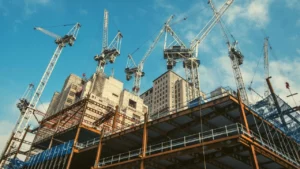Brazil’s construction sector is showing signs of stress as 2025 unfolds, according to new figures from the respected Fundação Getulio Vargas (FGV).
The main confidence index for the industry dropped 1.3 points in July to 92.7, hitting its lowest mark in over three years. This marks a steady seven-month decline, which signals growing unease about the future.
Builders are not optimistic about the months ahead. The Expectations Index slipped by another 3.3 points, showing the lowest business expectations since 2021.
Meanwhile, the measure for current business conditions barely moved, reflecting only a slight improvement but not enough to offset concerns. Use of equipment and workers is also down.
The sector’s capacity utilization fell to 78.2%, with labor at 79.2% and machinery even lower at 72.2%. This means construction companies are using less of their available resources, a cl***ic sign that new projects are slowing.

The caution comes even after a strong 2024, when the industry grew by about 4.1%. That year, government housing and infrastructure projects created over 100,000 new jobs and boosted overall earnings in the field.
However, companies now face higher interest rates, expensive loans, and rising labor costs—last year alone, wages rose by more than 8.5%.
Delays and red tape have added to the pressure, especially for smaller firms. Access to affordable credit remains tight, so starting new construction projects is harder, and equipment sales have cooled as a result.
All this matters because construction is a main engine in Brazil’s economy, providing millions of jobs and driving growth in related businesses from cement to heavy machinery.
When construction slows, fewer people get hired, and many companies feel the impact up and down the supply chain. The current drop in confidence sends an early warning that Brazil’s wider economy could be heading for a tougher period.
These facts are taken from the latest official economic reports and reflect a real shift in the business mood, not just temporary worries.
For anyone tracking South America’s biggest economy, the signs from construction are clear: companies are pulling back, and it could affect everyone from workers to investors.



